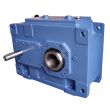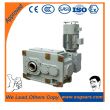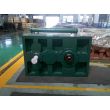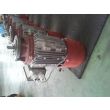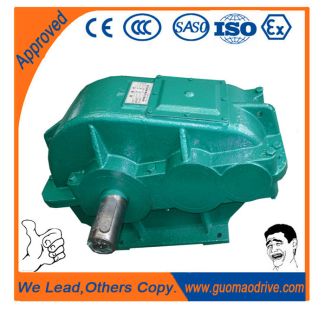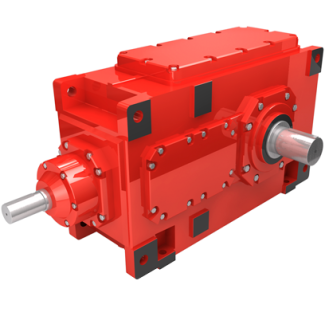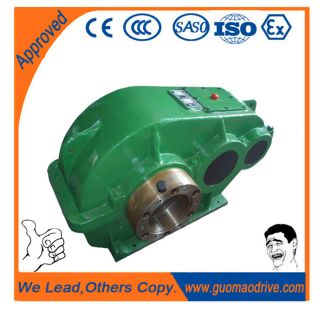Bevel-helical gear reducer B4 for pump pipes and cov er please contact us for e B4-SV-10-D
In stock
SKU
B4-SV-10-D
$21,964.29
Flender/Flender Gear Units/Bevel-helical gear reducer B4
sted, in particular: the heat transfer from the heat transfer medium to the medium to be distilled in the liquid and vapour phase, the flow velocity and its effect in connection with solids on the abrasion of the reactor tube,
and vapour phase, the flow velocity and its effect in connection with solids on the abrasion of the reactor tube,  the separation and recondensation of the distillates, as well as the 2 concentration and discharge of the residue The reactor
the separation and recondensation of the distillates, as well as the 2 concentration and discharge of the residue The reactor  temperatures in this case would lead to cracking of the lubricatin oil molecules However, the process was to be controlled
temperatures in this case would lead to cracking of the lubricatin oil molecules However, the process was to be controlled  in such way as to prevent such cracfing processesand, in conjunction with ,,fine"vacuum, guarantee maximum lubricating oil yield 3. Results The process of single-stage distillation has proven successful Problems arising from sedimen- tation and condensation in the separators, pipelines, coolers, vacuum pumps and discharge pumps were largely eradicated by optimising the plant It was already ossible to produce water-clear fractions in some of the fir$ optimisation trials The individual (actions require only little further processing The yield was increased to over 9% of the starting product by using high vacuum capacity increase up to 3 kg/ was achieved by expanding the plant Only industrially produced standard parts were used in this context The hazardous waste occurring (acid tar, oily bleaching earth) was reduced from 3 to would considerably reduce this proportion and increase the product yield accordingly at the same time The sum product (petroleum coke), accounting for share of approx 4%, can be used as primary &el in the cement industry Improvement of the process temperature accuracy to +/- 0 2 ", as well as an increase of the vacuum to 1 to 5 mbar, were carried out in the course of further optimisation The processing temperatures were increased to more than 4 " Although the temperatures were above the crackin temperature of the respective oil, no ageing or cracking of the feedstock used was determine% Furthermore, it was roven that chlorine, sulphur and PAHs ar
in such way as to prevent such cracfing processesand, in conjunction with ,,fine"vacuum, guarantee maximum lubricating oil yield 3. Results The process of single-stage distillation has proven successful Problems arising from sedimen- tation and condensation in the separators, pipelines, coolers, vacuum pumps and discharge pumps were largely eradicated by optimising the plant It was already ossible to produce water-clear fractions in some of the fir$ optimisation trials The individual (actions require only little further processing The yield was increased to over 9% of the starting product by using high vacuum capacity increase up to 3 kg/ was achieved by expanding the plant Only industrially produced standard parts were used in this context The hazardous waste occurring (acid tar, oily bleaching earth) was reduced from 3 to would considerably reduce this proportion and increase the product yield accordingly at the same time The sum product (petroleum coke), accounting for share of approx 4%, can be used as primary &el in the cement industry Improvement of the process temperature accuracy to +/- 0 2 ", as well as an increase of the vacuum to 1 to 5 mbar, were carried out in the course of further optimisation The processing temperatures were increased to more than 4 " Although the temperatures were above the crackin temperature of the respective oil, no ageing or cracking of the feedstock used was determine% Furthermore, it was roven that chlorine, sulphur and PAHs ar| Model Type | Bevel-helical gear reducer B4 |
|---|---|
| Gear Type | Bevel Helical Gear |
| Weight (kg) | 1025.000000 |
| Ratio Range | 1 : 100…400 |
| Low Speed Output | Solid shaft with parallel key acc. to DIN 6885/1 |
| Nominal Torque | 44200 Nm |
| Mounting Arrangements | Vertical mounting position |
| Manufacturer | Flender Bocholt |
| Country of Manufacture | Belgium |
| Data Sheet & Drawings | Bevel-helical gear reducer B4 for pump pipes and cov er please contact us for e B4-SV-10-D |

